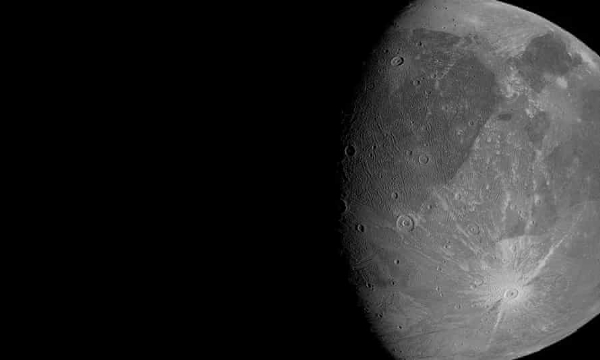Nasa spacecraft captures first closeups of Jupiter’s largest moon
Total Views |
Florida, June 09: NASA's Juno spacecraft has snapped incredible photos of Jupiter's largest moon 'Ganymede', after it flew as close as 645 miles (1,038 kilometers) to the surface of Ganymede. The detailed photos show craters, the terrain, and long structural features possibly linked to tectonic faults.

NASA in a statement said," The photos – one from the Jupiter orbiter’s JunoCam imager and the other from its Stellar Reference Unit star camera – show the surface in remarkable detail, including craters, clearly distinct dark and bright terrain, and long structural features possibly linked to tectonic faults."
NASA further said that the sunlit picture released was captured using JunoCam paired with a "green filter," the spacecraft's visible light imager. As per NASA, when versions of the same image come down a color portrait of Ganymede will be able to be provided by image experts, incorporating the camera’s red and blue filters, up to a resolution of 0.6 miles (1 kilometer) per pixel.
Additionally, the low-light optimized Stellar Reference Unit camera used by Juno to stay on course provided one black-and-white image of the dark side of Ganymede (the side opposite to the Sun).
Juno's lead scientist, Scott Bolton, of the Southwest Research Institute in San Antonio, "This is the closest any spacecraft has come to this mammoth moon in a generation." He added, "We are going to take our time before we draw any scientific conclusions, but until then we can simply marvel at this celestial wonder."
Also Read |
Black Carbon over Himalayas, a key contributor of Global Warming, can now be estimated precisely
Ganymede is one of 79 known moons around Jupiter, a gas giant. The Italian astronomer Galileo Galilei discovered Ganymede in 1610, along with Jupiter’s three next-biggest moons.
NASA's solar-powered Juno spacecraft was launched a decade ago and has been orbiting Jupiter for five years now. It is built and operated by Lockheed Martin Space in Denver.
.
.